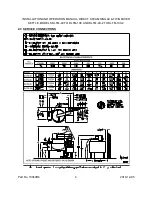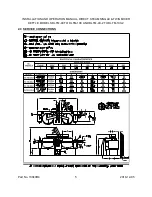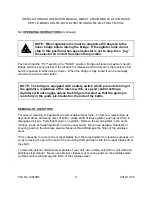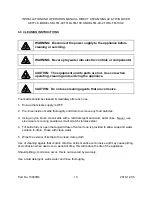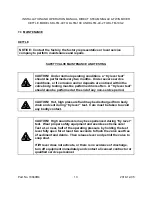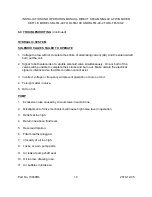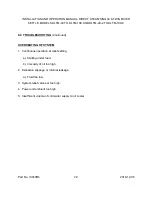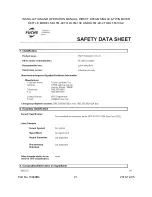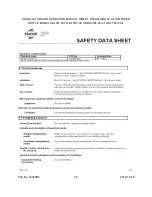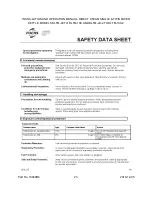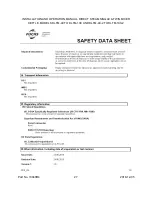
INSTALLATION AND OPERATION MANUAL, DIRECT STEAM SINGLE & TWIN MIXER
KETTLE, MODELS DLTM-40 TO DLTM-100 AND DLTM-40-2 TO DLTM-100-2
8.0 TROUBLESHOOTING
EXTREMELY SLOW COOKING TIME
If cooking time is abnormally slow, this may be due to insufficient steam pressure and/or
volume. Determine that pressure on incoming steam line at kettle is within 5 psi of rated kettle
pressure. Note that pressures approaching the rated kettle pressure are liable to set off the
safety relief valve. If required pressure is available to kettle, then volume of steam may not be
sufficient. Minimum 3/4" pipe size is required to the kettle but if the steam generating source is
at a great distance from the kettle, larger pipe will be required. Finally, the core of the steam
supply pipe may have debris or scalants that impede steam flow and will require disassembly
and inspection.
AIR VENTING
A steam trap assembly is plumbed to the exhaust (condensate) side of the kettle(s). The
thermostatic trap is a mechanical device that closes on high temperature and opens when the
temperature drops, allowing water which formed from the condensate to exhaust, but retain
steam under pressure.
The temperatures required for the cooking process to function adequately must be greater than
the boiling point of the liquid food product. The greater the steam pressure used, the higher the
temperature and the quicker the cooking process. For example, steam pressurized at 30 psi
reaches a temperature of 274 degrees Fahrenheit (135 degrees Celsius). Since air is an
unsuitable media through which heat may be transferred, it should be exhausted from the
jacket by opening the pressure relief valve until the air has been completely replaced by
pressurized steam.
In the initial stages of the cooking process, when the steam comes in contact with the cold
kettle bowl surface, it condenses and forms a large amount of water. The condensate water
must be removed from the kettle jacket in order for the kettle to function adequately. The ball
valve located at the base of the kettle jacket may be opened to remove the water. It may be
necessary to repeat this procedure several times depending on the number of batches being
cooked as each batch will create condensate. If the kettle appears to be slow in heating, this
would indicate that there is water in the jacket. Open ball valve and drain. Close valve and
commence operation of kettle.
Part No. 10040R4
17
2018-12-05


